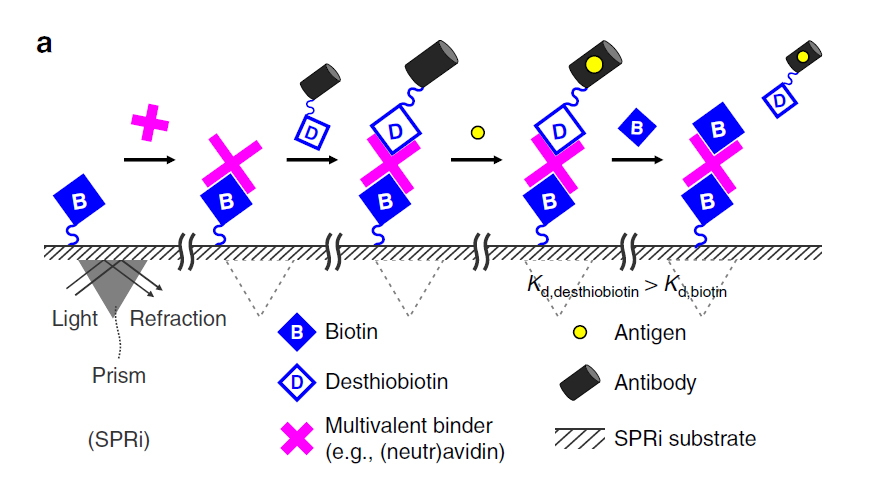A material that controls the behavior of cells in a dynamic way, just like this is happening our body. It is now possible using a new technique that uses functional components that can be ‘clicked’ to a material using Vitamine H. Researchers of the TechMed Centre of the University of Twente will now be able to add functionality to biomateirals while cells of the material remain alive. They publish these results in Nature Communications of 25 September.
Our own tissue is contstantly changing and renewing. That is very clear when you see how wounds heal, but we also see it in aging. Biomedical engineers face the challenge of developing materials that can mimick the natural dynamic behavior of our own cells. Most of the current materials are static and thus have one predefined function. They lack the versatility of natural tissue, which implues that tissue grown in the lab, can only be applied in research and therapies. Adapting materials properties was possible to some extent, but in many cases this was done using complex techniques often using toxic substances harmful to the living cells. The technology that is now developed by UT researchers, is fully compatible with living cells and what’s more: it is based on relatively cheap, simple, safe chemistry with a wide range of applications.
Vitamin H
The researchers applied Vitamin H to the materials and proved that it is possible to click ‘stimulating elements’ to the biomaterials. The dynamic behavior of biologic tissue can be mimicked by using two versions of vitamin H. Connecting Vitamins with different strengths to the material, makes exchange possible. It is even possible to add materials with multiple functionality cell and even change them actively in time. This is an important breakthrough that offers chances to, for example, stimulate making tissue that can work in the same way as our own tissue. Another option is to mimick diseases in the lab, for development and testing of medication.

A desthiobiotin molecule, including antibody and an antigen, makes place for biotin
Bone and cartilage from stem cells
The new technology enable partial functionalization of a material, which opens the way of culturing complex tissue in the lab. You could think of a biomaterial with stem cells, in which part of the cells, in one half of the material, is stimulated towards bone formaten, while they create cartilage in the other half. This can substantially help in improving joint defects caused by cartilage damage. The technology that is now presented in Nature Communications, offers a wide range of possibilities of creating new biomaterials as a blueprint for creating lifelike organs.
Research has been done by Dr. Kamperman and Dr. Leijten of the Developmental BioEngineering departement, part of UT’s new TechMed Centre.
The paper ‘Spationtemporal material functionalization via competitive supramolecular complexation of avidin and biotin analogs’, by Tom Kamperman, Michelle Koerselman, Cindy Kelder, Jan Hendriks, João Crispim, Xandra de Peuter, Pieter Dijkstra, Marcel Karperien en Jeroen Leijten, appeared in Nature Communications.





